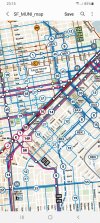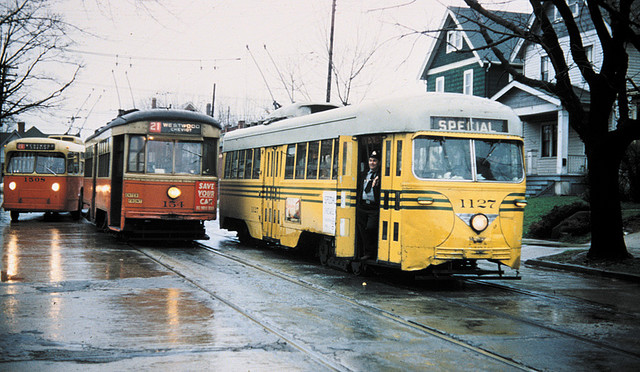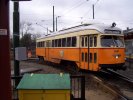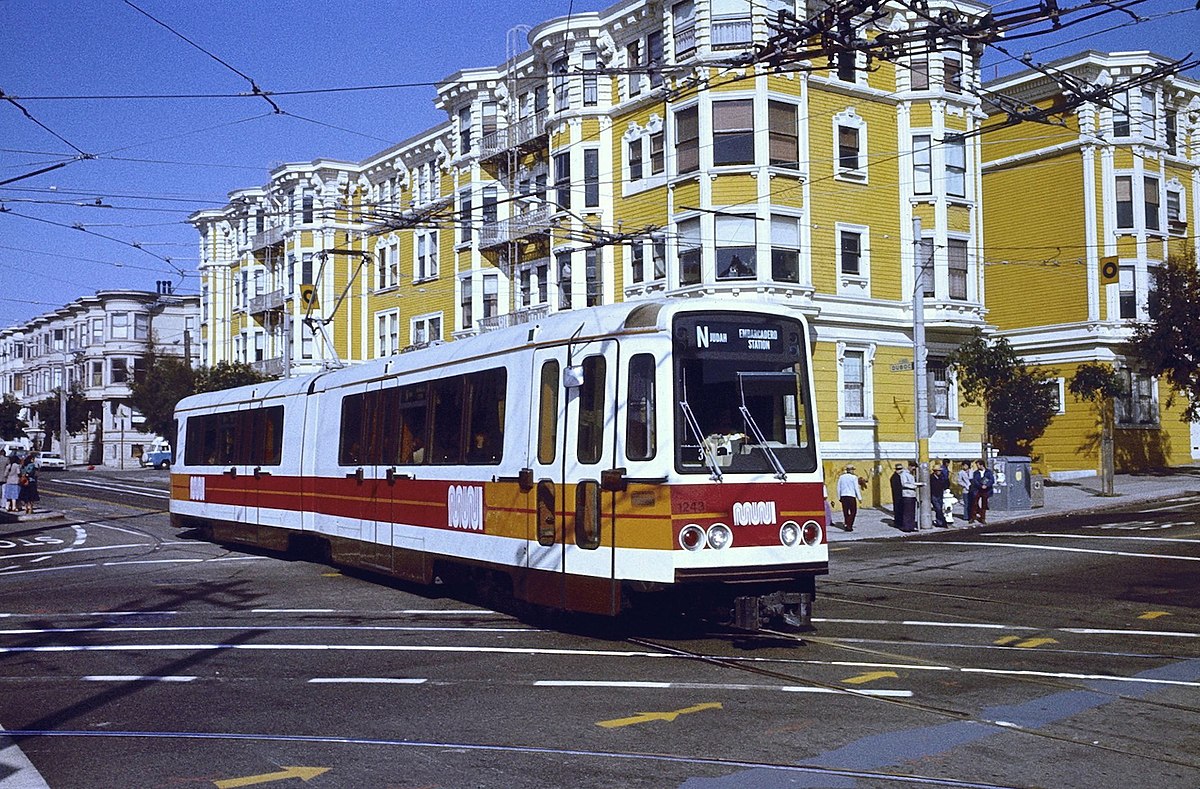Back to Market Street . . .
I have a soft spot for San Francisco, having worked in the North Bay Area & lived in Marin County for a period of my life. I spent many evenings and weekends pottering around the city - much to the consternation of my colleagues & friends, who regarded San Francisco as a cesspool of iniquity at that time and never went there if they could possibly avoid it.
Anyhow, I always remember that ubiquitous two-tone orange and white livery which was the hallmark of Muni buses, trolleybuses and Boeing LRVs up until the mid-1990s, and was a sort of background theme-tune of my younger, more exciting days.
This colour scheme was apparently promoted as 'Sunset Orange' when first introduced around 1975, and was the product of Walter Landor, a well-known SF-based industrial and brand designer of the era. Rather than 'Sunset', the orange & white became commonly known as the Landor livery.
In the late 1970s, a handful of the Muni PCCs (still in regular service at the time ahead of full-scale commissioning of the Muni Metro subway and Boeing cars) were repainted into the Landor orange & white. Despite a possibly anticipated clash between retro streetcar style and "1970s bright new future" colours, I thought the two actually went together very well (but, as Buckingham Palace would say, opinions may vary).
It's a pity none of the restored, multi-coloured PCCs on today's Market & Wharves line have been turned out in this iconic orange San Francisco livery. Especially considering there are a number of cars running in the preceding Muni Green and white, and, as it's getting on for 50 years old now, Landor should just about be qualifying as 'heritage'.
Muni PCC car 1040 on Market Street, San Francisco, CA in February 1980.
Image source: Roger Puta collection, released into public domain via Wiki commons.
Despite Landor's organisation being San Francisco based, I have my own theory about how that orange & white scheme and the 'squiggly worm' Muni logo came about.
I suspect that back in the mid-seventies, Landor or one of his associates visited Manchester. He, or she, saw all the Selnec buses on city's streets and thought, "Hang on. We live in a damp, foggy, drizzly city too. San Francisco should have some nice orange and white buses, just like these in Manchester!" This would have taken place around 1974, when Selnec was morphing into Greater Manchester Transport, the GMT 'M-blem' logo was being introduced, and new buses were appearing in a slightly darker shade of orange. Funnily enough, the Landor livery & logo were announced in SF in January 1975!
So that's where the 'Landor' two shades of orange & white scheme and the squiggly Muni logo (still in use today, like GMT's) came from. Pure knock-off from 1970s Manchester.











